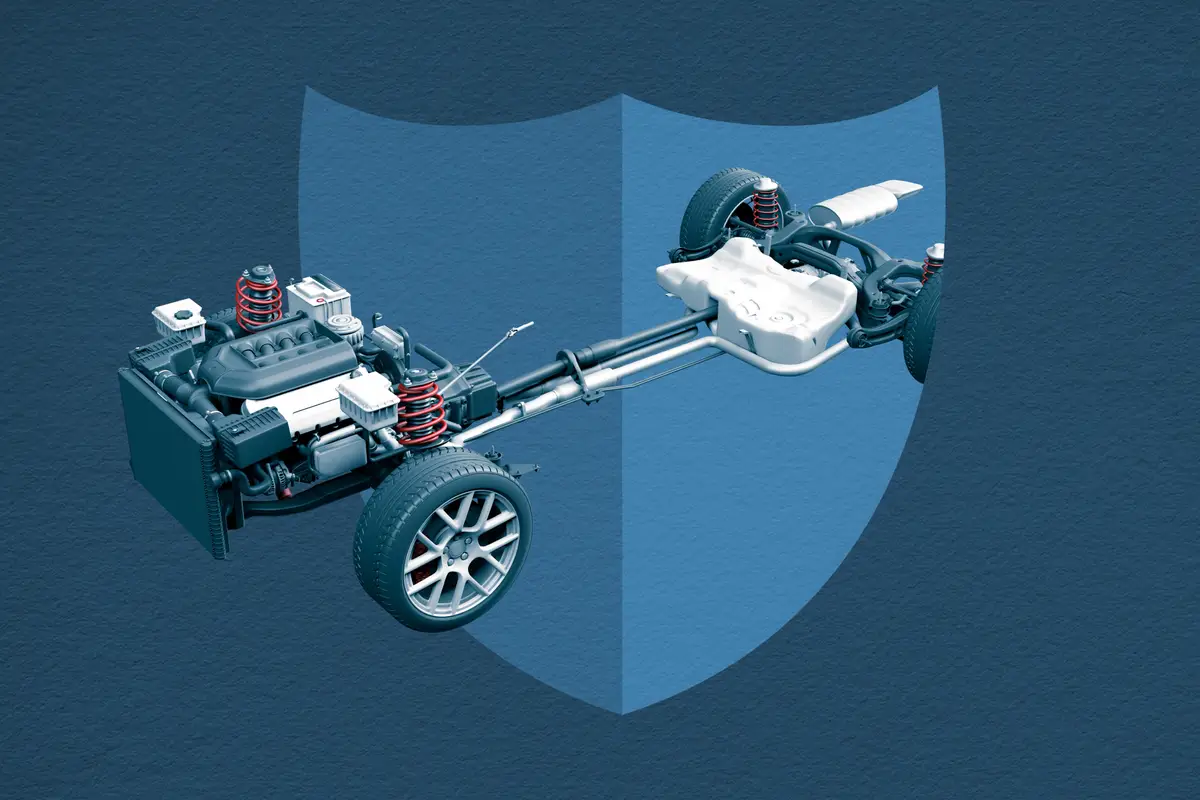How Do I Find Out if a Car Is Still Under Warranty?

Editor’s note: This article was last updated on Sept. 25, 2022. It has been reviewed by Cars.com Senior News Editor Jennifer Harrington and is still accurate.
Figuring out whether or not your vehicle is still under warranty can bring peace of mind in case something goes wrong. Perhaps the most direct way to find out is to contact a dealer for that make of car or the manufacturer itself. But there are other ways, as well, which may take more steps and cost something, though it would likely provide more information.
Related: Which Vehicles Have the Best Warranty Coverage?
Finding the Original Warranty Terms
Regardless of how you go about determining whether your car is under warranty, you’ll almost certainly need the car’s vehicle identification number, which is a 17-character mix of letters and numbers that is unique to your car. It can be found either on the driver’s side of the dashboard at the base of the windshield or on a sticker affixed to the driver-side door jamb. (Type out the VIN in a text document — checking carefully that it’s correct — so you can copy and paste it, as you may be asked for it multiple times.)
Warranty durations have a time and, usually, a mileage limit. For instance, a typical bumper-to-bumper warranty might be for three years/36,000 miles, which is commonly expressed as “3/36.” It expires whenever the first limit is reached — either three years or 36,000 miles. Many corrosion warranties, on the other hand, have just a time limit.
While the vehicle’s odometer should give you the mileage, determining the “years” is a bit trickier. That’s because it’s based on the original date of sale to the customer, not the car’s model year, and that date of sale for a given model year of car can vary tremendously. For instance, a 2020 model-year car could have been built anywhere between Jan. 1, 2019 and Dec. 31, 2020 — essentially a two-year spread — and may not have been sold to a customer for some time after that.
Besides knowing the warranty durations and original date of sale, you may also need to determine what part of the warranty is transferable to a second owner. For instance, the famed 10/100 powertrain warranty offered by Hyundai, Kia and Mitsubishi only applies to the original owner, with subsequent owners just getting powertrain coverage for the same 5/60 as the bumper-to-bumper warranty.
If you don’t have the owner’s manual that states the warranty terms, you might be able to find it online by Googling, “What was the manufacturer warranty on a [year, make, model]?” For example, “What was the manufacturer warranty on a 2020 Dodge Charger?” You should also be able to find the information on the manufacturer’s website.

Determining the Car’s Date of Sale and Whether It’s Covered
Unfortunately, determining the sale date of a car (assuming you don’t have the original paperwork) or whether it’s still covered under warranty isn’t easy. A dealership doesn’t have to give you that information — even if you can find the people who could — and it’s possible it’d get it wrong. Going straight to the manufacturer might be better.
A Google search for “How do I contact [manufacturer]?” (e.g., “How do I contact Toyota?”) might be a good start. You could also go right to the manufacturer’s website, though you may have to dig around to find the links to its support or contact pages. Once you get to the manufacturer’s support page, you’ll usually find a way to get to a warranties page. From there, you should be able to at least find the original warranty coverage for your vehicle’s year and model, and may be able to copy and paste in your VIN to find out if it’s still under warranty. There may also be a phone number you can call.
If that proves unsuccessful — or you want more information about the car — you can use the VIN to get the info online, though you’ll probably have to pay money to buy a report. Ordering one of these reports — which typically includes lots of other information about the car in question — isn’t a bad idea, particularly if you’re looking up a car you’re thinking of buying. Perhaps the best known vehicle report provider is CarFax, which provides a fairly detailed summary that includes ownership transfers, states where the vehicle was titled, most major accidents, some service work and mileage history (so you can check if the odometer was rolled back).
Other Warranties
If the original buyer purchased an extended warranty or a previous owner bought the car as certified used carrying a longer warranty — and those warranties are transferable — they may cover at least the powertrain up to roughly 100,000 miles. The trouble is, you’d probably need paperwork from the previous owner to prove either of those warranties existed and whether they’re transferable to the next owner, though a dealer may be able to look it up with the car’s VIN.
Some parts — typically safety related — may be covered outside the normal warranty period due to a recall. To find any recalls that affect the car in question, you can go to the National Highway Traffic Safety Administration’s site at NHTSA.gov/recalls and enter the VIN.
Sometimes, there may also be a “secret warranty” on a given part of a car that has been found to prematurely fail after the warranty period is up. This is strictly voluntary on the part of the manufacturer — usually given as a goodwill gesture — and may not cover the whole repair. As the name implies, these warranties aren’t widely publicized. But particularly if a part fails not long after the warranty has expired, it may be worth a Google search for “secret warranty on [year, make, part] (e.g., “secret warranty on 2007 BMW fuel pump”) or calling a dealer to ask.
More From Cars.com:
- Are Extended Car Warranties Worth It?
- Making Sense of Used-Car Warranties
- What Is a Powertrain Warranty?
- More Warranty News
- Find Your Next Car
Related Video:
Cars.com’s Editorial department is your source for automotive news and reviews. In line with Cars.com’s long-standing ethics policy, editors and reviewers don’t accept gifts or free trips from automakers. The Editorial department is independent of Cars.com’s advertising, sales and sponsored content departments.
Featured stories




